One of humanity’s greatest engineering feats and a vital artery of the world economy, the Suez Canal is a waterway that bridges continents and brings the world closer together.
In this post, we’ll look at several maps of the Suez Canal and the shipping route it enables. We’ll also learn about its history, geography, economic impact, challenges, and more.
The Suez Canal: An Overview
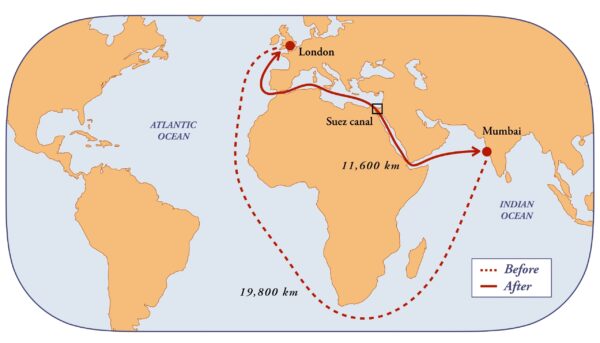
The Suez Canal is strategically located, connecting the Mediterranean Sea at its northern end to the Red Sea at the southern tip. By bridging these two major bodies of water, the canal effectively joins Europe to the Asian maritime routes leading to the Indian and Pacific Oceans.
The historical significance of the Suez Canal is profound. Before its completion in 1869, ships had to navigate the lengthy and treacherous route around the southern tip of Africa, the Cape of Good Hope, to reach Asian markets from Europe.
The opening of the canal marked a new era in global trade, drastically reducing the sea voyage distance between Europe and Asia by thousands of miles. This monumental achievement not only facilitated faster trade routes but also had far-reaching geopolitical and economic implications.
The concept of connecting Europe with the Indian and Pacific Oceans through the Suez Canal revolutionized maritime navigation and global commerce. It offered a direct and efficient route for shipping, significantly cutting travel time and costs, which in turn accelerated the exchange of goods, culture, and ideas between the West and East.
This connectivity has made the Suez Canal an enduring symbol of ingenuity and ambition, underscoring its role as an essential artery in the body of international trade and economics.
History of the Suez Canal
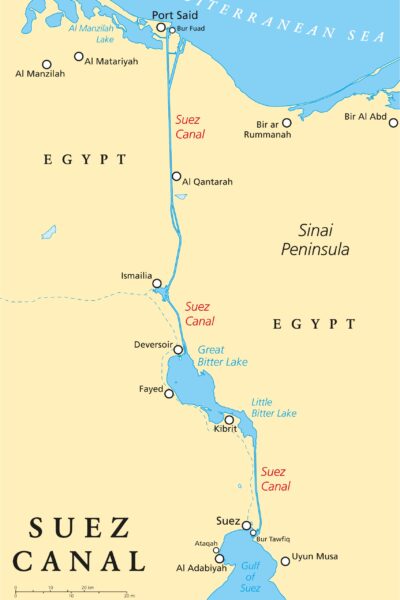
The history of the Suez Canal is one of human ambition, geopolitical intrigue, and technological advancement. The monumental endeavor to create a navigable waterway linking the Mediterranean and the Red Sea traces its conceptual origins back to ancient times. Yet, it was not until the 19th century that this vision was fully realized.
Early Concepts and Attempts
The idea of connecting the Mediterranean Sea to the Red Sea has ancient roots. Historical records suggest that as early as the second millennium BCE, pharaonic Egypt undertook efforts to create a canal linking the Nile River with the Red Sea, a precursor to the modern Suez Canal.
These canals were constructed in an east-west direction from the Nile to the Red Sea, rather than the current north-south orientation of the Suez Canal linking the Mediterranean with the Red Sea.
Over the centuries, various rulers and empires entertained the concept of connecting the two seas, with the ancient Greeks, Persians, and Romans all exploring the feasibility of such a project. One of the first rulers with this idea was Egyptian Pharaoh Senausert III of the Twelfth Dynasty. However, all early attempts were either partial, short-lived, or abandoned due to technological and environmental challenges.
Construction of the Canal
The real momentum for the construction of the Suez Canal as we know it today began in the early 19th century. The French consul in Egypt, Ferdinand de Lesseps, was a pivotal figure in bringing the ancient dream into reality. A diplomat with a vision, de Lesseps secured a concession from Said Pasha, the Ottoman viceroy of Egypt, in 1854 to construct and operate the canal for a period of 99 years.
De Lesseps founded the Suez Canal Company in 1858, and construction began a year later. This massive undertaking was not without its challenges. The Suez Canal project was a colossal engineering feat requiring the excavation of approximately 75 million cubic yards of sand and clay over a decade.
The strategic importance of the canal was evident, and even during its construction, France, Egypt, and Britain sought ways to have some control over it.
Key Figures and Construction Techniques

Ferdinand de Lesseps emerged as the charismatic leader of the project, navigating not only the physical but also the diplomatic landscape required to achieve such an ambitious goal.
Under his supervision, the project initially relied heavily on forced labor, with tens of thousands of Egyptian workers mobilized to dig the canal by hand. This method proved to be both inefficient and inhumane, sparking an international outcry and leading to a significant shift in the construction approach.
By the 1860s, the introduction of modern construction techniques, including steam-powered dredgers and excavators, transformed the project. This transition marked one of the first major uses of industrial technology in a large-scale engineering project, setting a precedent for future endeavors.
Completion and Impact
The Suez Canal was officially opened on November 17, 1869, in a grand ceremony attended by international dignitaries. The completion of the canal was a watershed moment in global trade, reducing the maritime journey between Europe and Asia by thousands of miles and cementing the canal’s status as a strategic economic artery.
The Legacy of Construction
The history of the Suez Canal’s construction is a testament to human ingenuity and resilience. It reflects the era’s technological advancements and the shifting dynamics of labor and industrialization.
The canal’s completion not only transformed global shipping and trade patterns but also had profound impacts on geopolitical relations, particularly in the context of colonial and post-colonial dynamics.
As the canal transitioned from a dream to reality, it exemplified the power of international cooperation, as well as competition, in the age of empire and industrial revolution.
Geography and Engineering of the Suez Canal
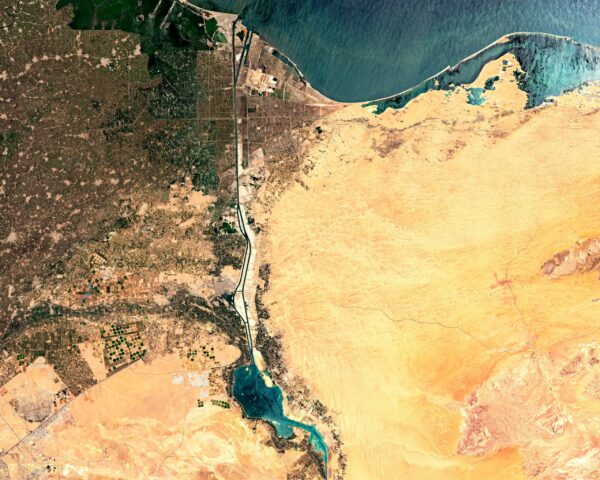
As we’ve seen through an examination of its history, the Suez Canal stands as an emblem of human ingenuity, a waterway carved through the desert to create a vital link for maritime trade between the Mediterranean and Red Seas.
This section explores the canal’s physical and geological features as well as the technological advancements that have allowed it to accommodate modern maritime traffic.
Physical and Geological Features
The canal extends over approximately 120 miles (193 kilometers), traversing a direct path between the Mediterranean Sea to the north and the Red Sea to the south. Its route cuts through the Isthmus of Suez, a narrow land bridge between the continents of Africa and Asia, which presented unique geographical and geological challenges during construction.
The canal operates without locks, maintaining a sea-level passage that requires constant attention to depth and width to accommodate the massive vessels of today’s commercial fleets.
Initially, the canal had a depth of about 26 feet (8 meters), allowing the steamships of the late 19th century to pass. However, the advent of modern, colossal cargo ships necessitated significant deepening and widening efforts. Today, the canal’s depth reaches up to 79 feet (24 meters) in some sections, with widths expanded to enable the passage of ships with larger drafts and wider beams.
The geological challenges of constructing and later expanding the canal were immense. Engineers had to deal with a variety of terrains, from soft sand to hard rock, requiring innovative solutions to excavation and stabilization.
Sand dunes in particular posed a constant threat of encroachment into the canal, necessitating the development of sophisticated dredging and sand management techniques.
Engineering Advances
The evolution of the Suez Canal over the years showcases a history of engineering advances that have enabled it to handle the ever-increasing size and complexity of global maritime traffic. The introduction of mechanical dredgers and then hydraulic excavators revolutionized the canal’s expansion, allowing for the efficient removal of millions of cubic meters of material.
To accommodate the latest generation of mega-ships, the canal has undergone extensive deepening and widening projects. The most notable of these was completed in recent years, something we’ll explore in our section on recent expansions and modernization efforts.
Navigation through the canal has also been enhanced by modern technological aids, including Global Positioning System (GPS) navigation and computerized traffic management systems, which ensure safe passage for the thousands of vessels that transit the canal annually.
Economic Impact and Global Trade
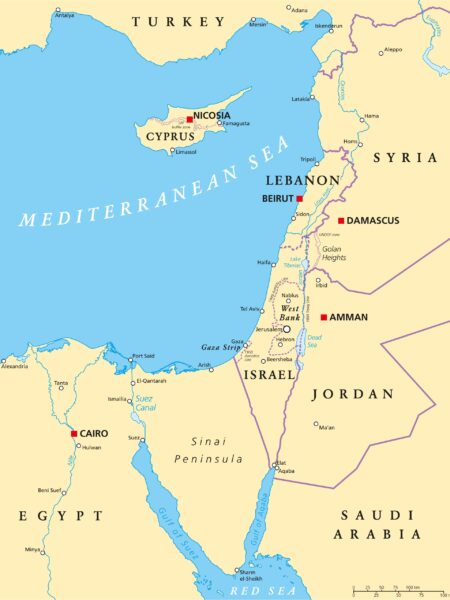
The Suez Canal’s role in global trade is profound, serving as a key artery through which a significant portion of the world’s commerce flows. This section delves into its capacity, the diversity of goods transported, and the economic benefits it brings to Egypt and the global economy at large.
Canal’s Role in Global Trade
Annually, the Suez Canal facilitates the passage of thousands of vessels, carrying billions of tons of cargo. It is particularly crucial for the transportation of oil, liquefied natural gas (LNG), grains, and various other commodities.
By providing a direct route between the Mediterranean and Red Seas, the canal significantly reduces travel time for shipping routes between Europe and Asia, thereby lowering transportation costs and making goods more affordable worldwide.
Economic Benefits
For Egypt, the canal is a cornerstone of its economy, generating over $9 billion in revenue in 2023. This income is vital for funding national projects, improving infrastructure, and bolstering the country’s economic stability. Beyond its direct financial contributions, the canal also supports thousands of jobs, from operations and maintenance to logistics and trade.
Impact on Oil Transport and Alternatives
The canal is especially critical for the global oil market, serving as a conduit for approximately 9% of the world’s oil demand. Its significance was underscored during closures, such as the one in 1956 and more recently in 2021, which led to spikes in oil prices and prompted shippers to seek longer, more costly alternative routes, like the Cape of Good Hope.
These closures also highlighted the world’s dependency on the canal and spurred interest in alternative transport methods, including pipelines and expanded shipping lanes.
Despite these alternatives, the Suez Canal’s strategic importance to the oil industry and global trade remains unmatched, underscoring its role as a crucial link in the chain of international commerce.
Recent Expansions and Modernization Efforts
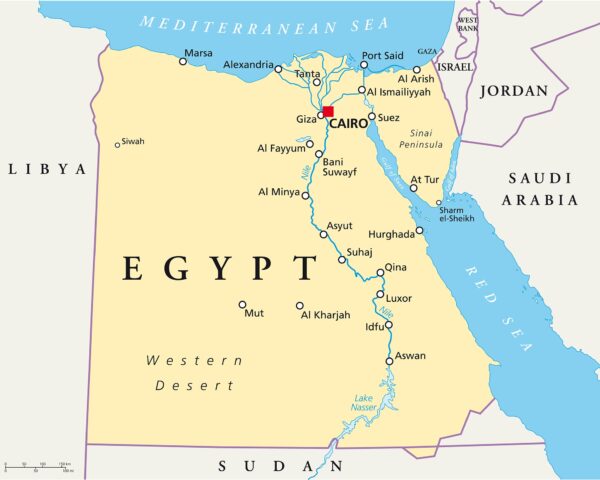
The Suez Canal has undergone several transformations since its inception, with the most significant recent expansion being the Suez Canal Extension project completed in 2015. This ambitious project aimed to solidify the canal’s status as a critical conduit for global trade through enhancements that would increase capacity, reduce transit times, and accommodate the ever-growing size of modern vessels.
The 2015 Expansion Project
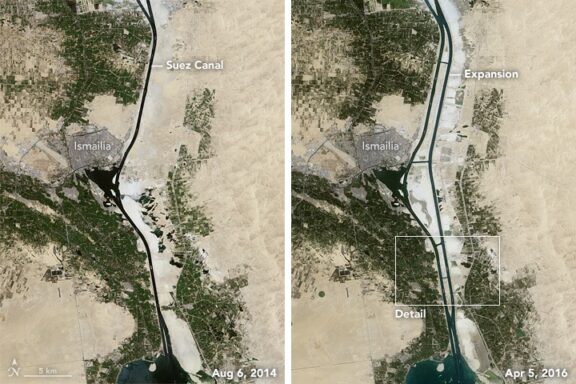
Launched in August 2014 and completed in just one year, the 2015 expansion was an engineering marvel, dubbed the “New Suez Canal.”
The project involved deepening and widening the existing canal and cutting a new 35-kilometer (22-mile) section, allowing ships to transit in both directions simultaneously over part of the route. This expansion was aimed at doubling the canal’s capacity from 49 to 97 ships per day, significantly reducing the waiting and transit times for vessels.
The goals of the project were ambitious: to bolster Egypt’s economy through increased canal revenues and to reaffirm the Suez Canal’s position as a vital link in global trade.
The achievements were notable, with the expanded canal enhancing navigational safety and reducing the average transit time from 18 to 11 hours for most ships, thus providing a more efficient route for global shipping routes.
Impact on Canal Capacity and Transit Times
The immediate impact of the expansion was a significant increase in the canal’s capacity and a reduction in transit times, leading to operational efficiencies for global shipping companies.
These improvements not only benefited the maritime industry by allowing for faster delivery of goods but also contributed to reducing shipping costs and the environmental footprint of maritime transport.
Future Plans for Further Expansions or Technological Advancements
Looking ahead, Egypt has outlined ambitious plans to further expand the canal’s capabilities and harness technological advancements to ensure its continued relevance and efficiency. These include proposals to deepen and widen the canal further to accommodate the next generation of mega-ships, which demand even greater depth and width for safe passage.
In addition to physical expansions, there is a focus on enhancing the canal’s technological infrastructure. This encompasses the introduction of advanced traffic management systems, the use of artificial intelligence for navigation safety, and the development of state-of-the-art maritime services.
These technological advancements are aimed at optimizing the canal’s operations, improving the environmental sustainability of the waterway, and ensuring it remains competitive in the face of global changes in shipping and trade patterns.
Challenges and Controversies
The Suez Canal, while a marvel of engineering and a cornerstone of global trade, has not been without its share of challenges and controversies. From geopolitical tensions to environmental concerns, the canal has been at the center of disputes and issues that reflect the complexities of operating one of the world’s most important waterways.
Geopolitical Tensions and Impacts on Canal Operations
The strategic importance of the Suez Canal has made it a focal point of geopolitical interest and tensions since its inception. The Suez Crisis of 1956 is perhaps the most notable example, when Egypt’s nationalization of the canal led to a military intervention by the United Kingdom, France, and Israel.
This event underscored the canal’s vulnerability to international conflict and its significance to global economic stability. It led to significant disruptions in canal operations and highlighted the potential for geopolitical tensions to impact global trade routes directly.
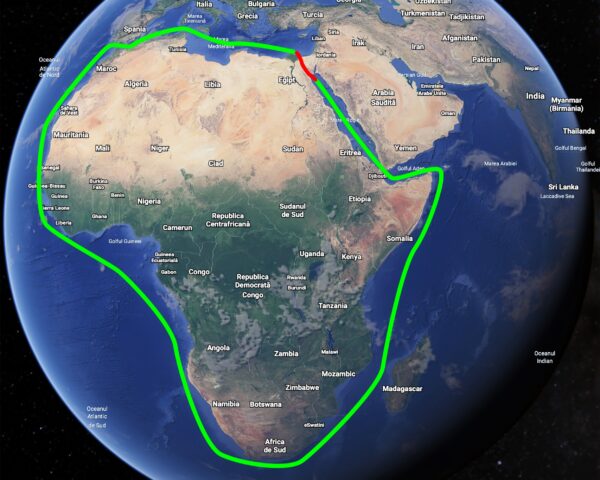
The Suez Canal was also closed between 1967 and 1975 after the start of the Six-Day War in which Israel invaded the Sinai Peninsula. The Suez Canal became the front line in the conflict between Egypt and Israel until Egypt was able to recapture the entire Sinai Peninsula in 1975.
While Egypt has taken considerable steps to secure the canal, including the construction of military bases, the potential for disruptions remains a concern for global shipping interests.
Environmental Concerns Related to the Canal and Its Expansions
The expansion and operation of the Suez Canal have also raised significant environmental concerns. The alterations to the canal’s structure and the dredging required for its expansion have had substantial impacts on the marine ecosystem and the surrounding environments.
These concerns include the disruption of marine habitats, increased salinity levels in nearby lakes, and the risk of invasive species being transported between the Red and Mediterranean Seas, potentially upsetting ecological balances.
The Canal’s Role in the 21st Century – Looking Ahead
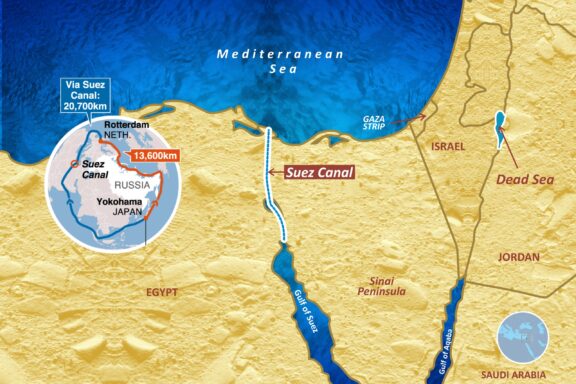
As we venture further into the 21st century, the Suez Canal’s strategic importance in contemporary geopolitics and global trade not only remains intact but is also poised to grow.
This pivotal maritime passage continues to facilitate a significant portion of the world’s commerce, serving as a crucial link between the East and the West. The canal’s role in the global economy, its impact on energy markets, and its contribution to international relations underscore its enduring significance.
Strategic Importance in Contemporary Geopolitics and Global Trade
In the realm of contemporary geopolitics, the Suez Canal represents a strategic asset that holds considerable economic and military significance. Its ability to influence global trade flows makes it a focal point for international diplomacy and security.
The canal’s efficiency and reliability are paramount for energy supplies, particularly for European and Asian markets, thereby reinforcing its geopolitical leverage. In an era where global trade dynamics are constantly evolving, the canal’s strategic location ensures its continued relevance, offering a shortcut that no technological advancement can render obsolete.
Challenges and Opportunities
Looking ahead, the Suez Canal faces potential challenges, including the rise of alternative routes. The melting Arctic ice, for example, is slowly opening new maritime pathways that could compete with traditional routes through the canal.
While these alternatives are still emerging and come with their own logistical and environmental challenges, they represent a potential shift in maritime trade patterns that could impact the canal’s dominance.
Technological changes in shipping, such as the development of larger and more efficient vessels, necessitate ongoing adaptations in the canal’s infrastructure. The canal authority must continue to invest in expansions and modernizations to accommodate these advancements, ensuring the waterway remains competitive and capable of handling the future demands of maritime traffic.
The Suez Canal’s future is bright with potential, poised to remain a central artery in global trade. Its continued strategic importance is assured by its unique geographical position and the global economy’s reliance on efficient maritime transport.
Image Sources and Copyright Information
- Map Showing Suez Canal Route Comparison: © Dimitrios Karamitros/Shutterstock
- Suez Canal Map: © Peter Hermes Furian/Shutterstock
- Suez Canal Map in the Middle East: © Peter Hermes Furian/Shutterstock
- Map of Egypt Highlighting Major Cities and Geographic Features: © Peter Hermes Furian/Shutterstock
- Before and After Satellite View of the Suez Canal Expansion: © NASA | Public Domain Mark 1.0
- Suez Canal Highlighted on Globe: © Ti Vla/Shutterstock
- Suez Canal Map Infographic: © shubhamtiwari/Shutterstock